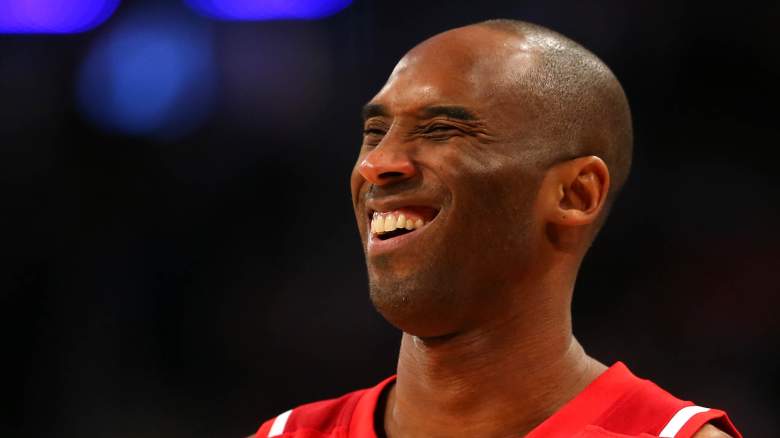
Being named an NBA All-Star is a high honor, usually reserved for the league’s most outstanding players. Yet not every selection has lived up to the high standards fans and analysts expect.
Over the years, some picks have sparked heated debates, with many questioning whether these players truly earned their spots.
Whether the selections were due to fan favoritism or team success, these moments of controversy highlight the potential flaws in the selection process.
We’ll examine the 10 most controversial All-Star selections in NBA history while exploring what made them so divisive.
10. Chris Kaman (2010)
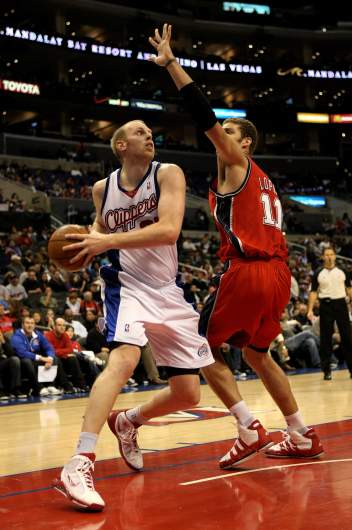
GettyChris Kaman #35 of the Los Angeles Clippers controls the ball against Brook Lopez #11 of the New Jersey Nets on January 18, 2010.
Former Los Angeles Clippers center Chris Kaman was selected as a reserve for the Western Conference during the 2009-10 season, replacing the injured Brandon Roy. The ambidextrous big averaged 20.0 points and 8.9 boards going into the All-Star break, establishing him as one of the better centers in the league that year. Kaman’s ability to score consistently in the post and anchor the Clippers’ frontcourt stood out in a league where dominant big men were becoming less common. On a struggling LA team that had no real playoff hopes, Kaman became their go-to offensive option.
Despite his impressive numbers, his Clippers were far from a contender. By the end of the season, they had amassed a 29-53 record.
His individual production justified his selection, as very few centers in the NBA were putting up similar numbers. However, his inclusion may have come at the expense of players on better teams who had less flashy stats but greater impacts. Critics pointed to the Clippers’ record and questioned whether Kaman’s numbers were empty stats, but his offensive output for a struggling franchise earned him respect.
9. Dale Davis (2000)

GetttyIndiana Pacers forward Dale Davis (R) puts a shot up over Cleveland Cavaliers forward Shawn Kemp (#4) in March 2000.
Dale Davis made the 2000 All-Star team largely due to his role on one of the Eastern Conference’s top squads, the Indiana Pacers. His averages of 10.0 points and 9.9 rebounds per game didn’t scream “NBA All-Star,” but Davis was a big factor in the Pacers’ success.
Known for his scrappy defense and rebounding, Davis brought toughness to the frontcourt, embodying the hard-nosed style that the Pacers were known for during this era of the franchise. That season, the Pacers made a memorable run to the NBA Finals, establishing themselves as the best team in the East and a serious championship contender. Davis’ presence in the paint was crucial to their postseason success.
His All-Star nod was a way of acknowledging the Pacers’ dominance that season, with Davis sharing honors with his teammate, Pacers legend Reggie Miller. Critics argued that Davis didn’t bring the excitement or individual star power fans expect from All-Stars, but his defensive and rebounding abilities helped him stand out in a weak Eastern Conference field. Playing for one of the best teams in the league certainly didn’t hurt his case either.
8. Kobe Bryant (2014)
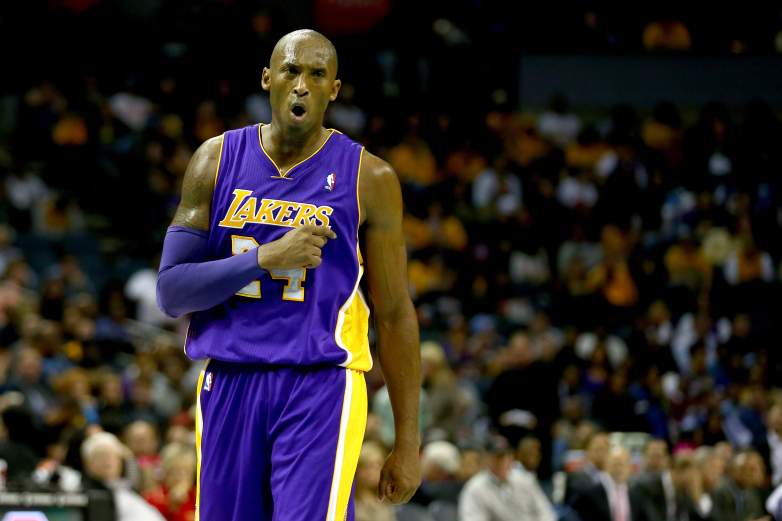
GettyKobe Bryant.
Kobe Bryant’s selection to the 2014 NBA All-Star Game was perhaps the most controversial of his great career. The Black Mamba was already a global icon and an all-time basketball great by this point, and his name carried immense weight among fans worldwide. However, his actual performance during the 2013-14 season didn’t come close to matching the expectations tied to his legendary reputation.
Bryant was recovering from a torn Achilles tendon suffered late in the 2012-13 season, an injury devastating for a player entering his mid-30s. He did manage a brief return in December 2013, but he played in only six games before a fractured knee forced him out for the remainder of the season.
During those six games, Bryant averaged 13.8 points, 6.3 assists, and 4.3 rebounds, numbers far below his career standards and hardly reflective of an All-Star campaign. Even though he played just six games that season due to injuries, fans across the globe still voted him into the starting lineup. This spoke volumes about his worldwide popularity, with millions of fans wanting to see him in any way possible.
Bryant’s inclusion could be seen as a celebration of his storied career. By 2014, Kobe was in the final chapters of a storied career, and many fans likely saw voting for him as a way to honor his legacy rather than reward him for that season’s performance. The All-Star Game, after all, is as much about entertainment and fan involvement as it is about recognizing the NBA’s top players.
Ultimately, Kobe chose to sit out of the All-Star Game to focus on his recovery, but his selection highlighted the thin line between celebrating iconic players and recognizing current on-court excellence. While it was undoubtedly controversial, his fan-driven selection underscored the immense love and admiration basketball fans had for Kobe, even in the twilight of his career.
7. James Donaldson (1988)
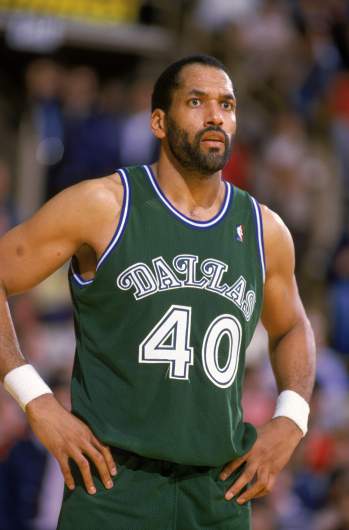
GettyJames Donaldson in 1987.
James Donaldson’s selection to the 1988 NBA All-Star Game stands as one of the most surprising choices in All-Star history. A towering 7-foot-2 center for the Dallas Mavericks, Donaldson was known more for his defensive presence and rebounding than for offensive firepower.
By midseason in 1987-88, he was averaging 7.0 points, 9.3 rebounds, and 1.3 blocks per game — solid numbers but far what is expected of an All-Star.
The context behind Donaldson’s selection provides some more insight. Injuries played a significant role that year as several Western Conference big men, including Kareem Abdul-Jabbar and Ralph Sampson, weren’t able participate. Because of this, Donaldson was added as a replacement by the league’s coaches, likely for his consistent presence in the paint and his contributions to a strong Dallas team. Dallas was a top squad in the Western Conference, and Donaldson’s role as the anchor of their defense gave him some credibility among coaches.
His All-Star nod was seen as a reward for his team’s overall success and his role as a defensive anchor. The controversy came from the lack of offensive production typically expected from an All-Star. While Donaldson’s selection seemed underwhelming, it underscored the idea that defense and team impact could sometimes outweigh scoring in the All-Star selection process.
6. Kyle Korver (2015)
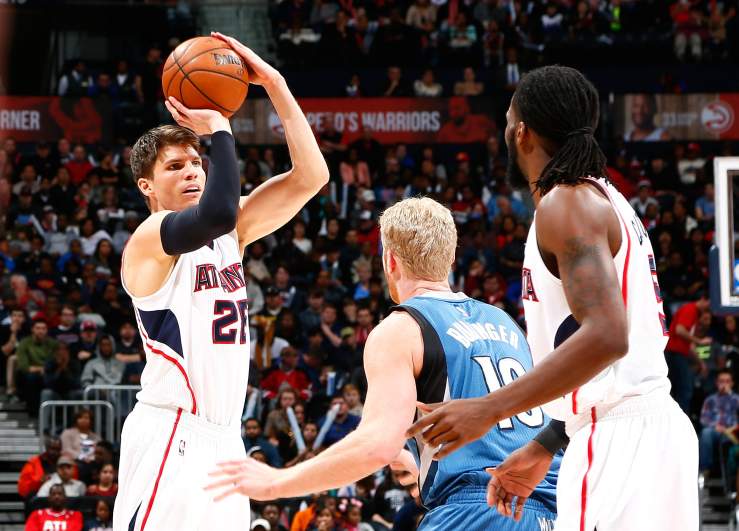
GettyKyle Korver #26 of the Atlanta Hawks against Chase Budinger #10 of the Minnesota Timberwolves in January 2015.
Kyle Korver’s 2015 All-Star selection is one many point to as one of the most puzzling, but makes a little more sense with context. The 2014-15 iteration of the Atlanta Hawks took the regular season by storm, with the entire starting lineup even being named Player(s) of the Month after an incredible January run. They finished the season with 60 wins and the top seed in the East.
By typical standards, Korver’s numbers (12.1 points, 4.1 rebounds, and 2.6 assists per game) weren’t particularly impressive for an All-Star. However, his incredible shooting efficiency and his role as a vital player in the Atlanta Hawks’ historic season made his inclusion more understandable.
Korver was a key reason for their success, as his shooting from beyond the arc opened up the floor for the team’s unselfish, pass-heavy offense. He led the league in 3-point percentage that season, hitting an incredible 49.2% of his attempts. At one point during the year, Korver was on pace for a historic 50-50-90 shooting season, something that still has yet to be accomplished.
What made Korver’s selection controversial was the perception that his inclusion was more about rewarding Atlanta’s team success than recognizing an individual player. The Hawks had four players named to the All-Star team that year: Korver, Al Horford, Paul Millsap, and Jeff Teague, which many felt was excessive. Korver initially missed out on being named to the All-Star team but was later added as an injury replacement for Dwyane Wade.
Despite the debate, Korver’s selection highlighted the importance of fitting into a system and contributing to team success. While his numbers weren’t incredible by traditional All-Star standards, his inclusion shows how a specialized skill set, such as elite shooting, and the ability to elevate a winning team can do you favors in the selection process. Korver’s All-Star selection is an example of a player being rewarded for objectively making his team better.
5. Jeff Teague (2015)

GettyJeff Teague.
Jeff Teague’s sole All-Star selection also came as part of the Atlanta Hawks’ dominant 2014-15 season, and like Korver, it was controversial for similar reasons. Teague averaged 15.9 points, 7.0 assists, and 2.5 rebounds per game, which were respectable starting point guard numbers but not eye-popping in an era with such excellent guard play.
Teague’s selection was largely seen as a product of the Hawks’ incredible run. They became just the third team in NBA history to go undefeated for an entire calendar month (17-0 in January 2015). As the team’s starting point guard, Teague was the engine of their offense, orchestrating plays and ensuring the ball movement that defined Atlanta’s success.
However, many questioned whether Teague’s individual performance truly warranted an All-Star nod. Guards like Brandon Knight and Kemba Walker, both having fantastic seasons in their own right, were passed over.
The controversy arose from the idea that Teague’s numbers weren’t exceptional and that his success was more a reflection of the system than his individual brilliance. In contrast, his teammate Kyle Korver was on pace for a historic shooting season and brought a unique, specialized skill set to the team. Korver’s amazing efficiency and elite three-point shooting made him a standout in a way Teague’s more traditional role did not, making Teague’s inclusion even more controversial.
While Teague’s inclusion might have been debatable, it is an example of how team success can elevate a player’s profile. His steady play was a huge factor in the Hawks’ rise, and his All-Star selection was largely due to him being the main playmaker of the Hawks’ system.
4. B.J. Armstrong (1994)
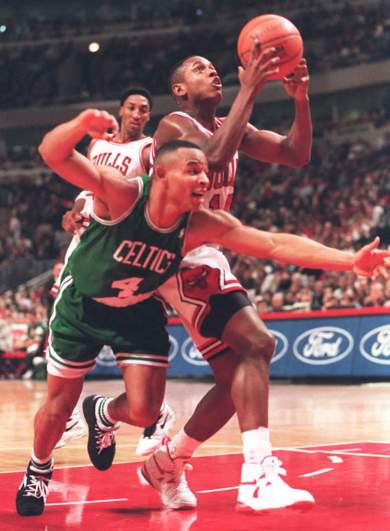
GettyBoston Celtics guard David Wesley (C) lunges past Chicago Bulls guard B.J. Armstrong (R) in December 1994.
B.J. Armstrong’s 1994 All-Star selection came at the height of the Chicago Bulls’ popularity. As the team’s starting point guard in the post-Michael Jordan era, Armstrong was averaging 14.8 points and 3.9 assists per game — solid numbers but not what many would expect from an All-Star campaign.
Armstrong’s selection was largely driven by fan voting, as Bulls fans rallied around their team in a post-Jordan transitional period. Armstrong’s status as a member of the Bulls dynasty clearly played a role, as fans wanted to see some Chicago representation in the All-Star Game.
Critics argued that Armstrong’s selection was more about popularity than performance. He led all Eastern Conference guards in votes, surpassing players like Kenny Anderson and Mark Price, both having statistically superior seasons. Armstrong’s modest stats, especially when stacked up against his contemporaries, made his selection stand out as one of the most questionable in All-Star history.
On the other hand, Armstrong’s selection can also be seen as a testament to his consistent play and ability to step up as a leader during a challenging period for the Bulls. He wasn’t a flashy player, but his consistency and leadership helped Chicago remain competitive after Jordan’s first retirement, even helping the team advance to the second round of the playoffs later that year.
3. Yao Ming (2011)
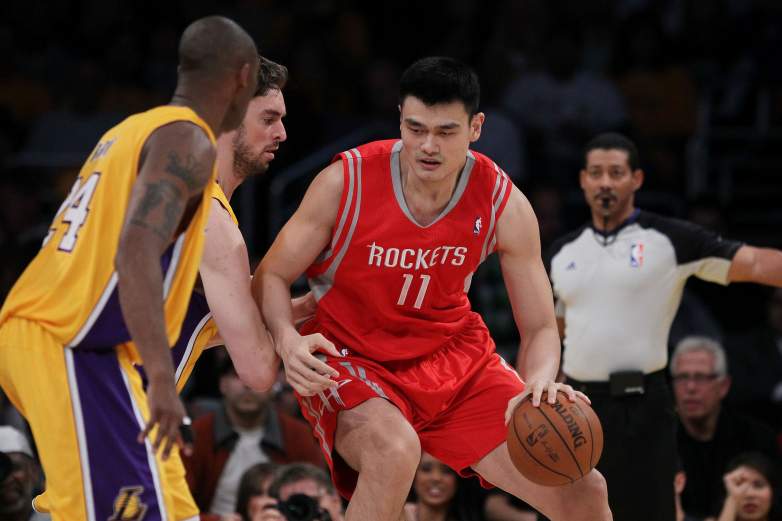
GettyYao Ming #11 of the Houston Rockets.
Yao Ming’s selection to the 2011 NBA All-Star Game was both understandable and controversial. By then, Yao was a global superstar, beloved in both China and the United States for his talent and personality. However, injuries had derailed his career, and by the 2010-11 season, he had played in just five games. He averaged 10.2 points and 5.4 rebounds before a stress fracture in his ankle ended his season prematurely.
Despite the very limited playing time, Yao was voted in as a starter by fans, thanks in part to his immense popularity in China. His selection ignited debates about the fairness of fan voting, as many felt that more deserving players in the Western Conference, such as an emerging Marc Gasol or the ever-underrated LaMarcus Aldridge, were overlooked.
Yao’s inclusion was a bittersweet moment. On one hand, it reflected his influence on the game and the respect fans had for him worldwide. On the other hand, it highlighted how fan voting could lead to questionable outcomes. While his All-Star appearance was controversial, it was a testament to his enormous on and off-court contributions to basketball.
2. Andrew Wiggins (2022)
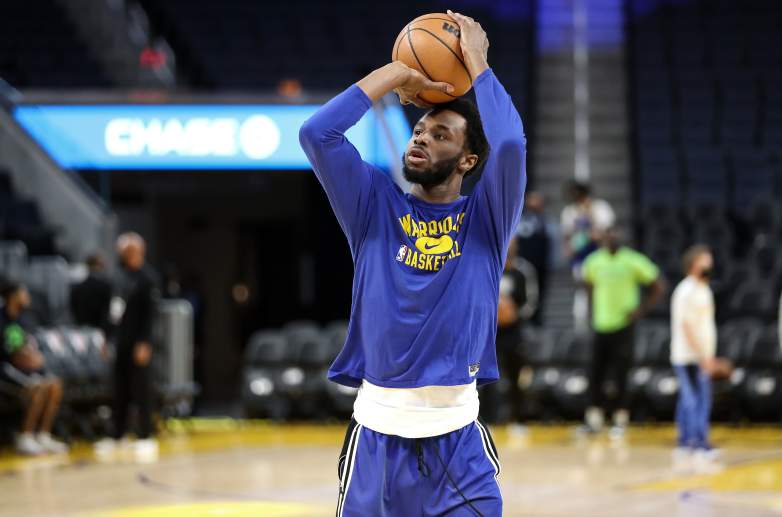
GettyAndrew Wiggins.
Andrew Wiggins’ selection as a 2022 All-Star starter surprised nearly everyone. While Wiggins had been enjoying something of a career renaissance with the Golden State Warriors, averaging 17.2 points and 4.5 rebounds per game as part of a winning squad, his stats didn’t scream All-Star, let alone starter.
Wiggins’ selection was largely attributed to the NBA’s weighted All-Star voting system, which combines fan, media, and player votes. Wiggins received an unexpected boost from fan voting, thanks to an endorsement from K-pop star BamBam, a Warriors ambassador with a massive worldwide following.
Critics argued that players like the Phoenix Suns’ Mikal Bridges and Minnesota Timberwolves‘ Karl-Anthony Towns were more deserving, as they were having stronger seasons statistically. However, Wiggins’ defensive contributions and his role on a winning Warriors team helped make a case for his inclusion.
His selection was divisive and it may be the biggest example of how fan engagement and team success can influence All-Star selection, even if the stats don’t fully support the decision.
1. Jamaal Magloire (2004)
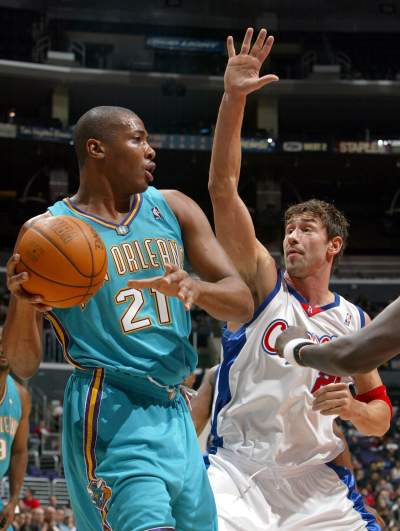
GettyJamaal Magloire #21 of the New Orleans Hornets looks to pass under pressure from Marko Jaric #20 of the Los Angeles Clippers in October 2004.
Jamaal Magloire’s selection to the 2004 NBA All-Star team remains one of the most debated selections in league history. At the time, Magloire was in his fourth season, where he put up solid but unspectacular numbers of 13.6 points and 10.3 rebounds per game.
While these stats were respectable, they were hardly eye-popping for an All-Star selection. In addition, the New Orleans Hornets were just middle of the pack, holding a mediocre 22-22 record at the break, far from the team dominance often used to justify borderline selections.
Magloire’s inclusion is a product of a now-outdated requirement for All-Star teams to feature at least one true center, regardless of whether there were better options at other positions. During the early 2000s, the NBA was in a transitional phase, moving away from traditional big men dominating the game, leaving the center pool thin. Magloire’s selection felt more like filling a quota rather than a reward for outstanding play.
Adding to the controversy, other players, both guards and forwards, had stronger individual cases for the honor that year. Magloire’s selection is often seen as an example of the league’s troubles with positional balance at the time, showing how the rigid requirements could lead to underwhelming picks.
While he did make the most of his opportunity, scoring 19 points and grabbing 8 rebounds in the All-Star Game, it wasn’t enough to silence critics about whether he truly earned his spot. His selection is often viewed as a product of outdated position requirements. It showcased the league’s outdated insistence on including a true center in the game.
Comments
The 10 Most Controversial NBA All-Star Selections in History